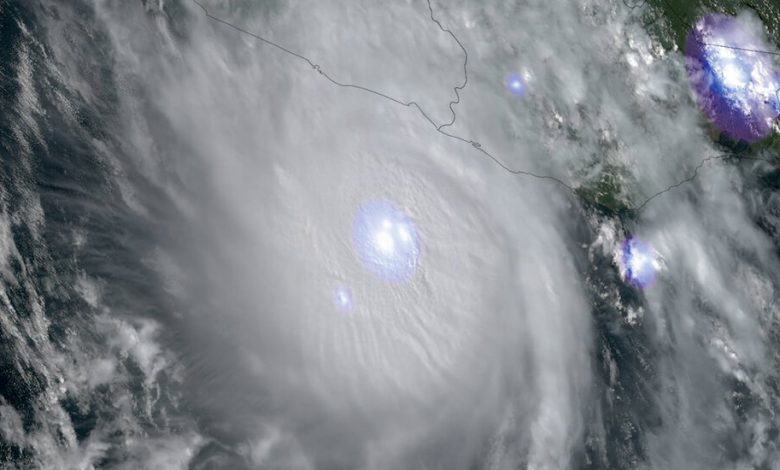Why Hurricane Otis Caught Many By Surprise

On Tuesday morning, few meteorologists were talking about Tropical Storm Otis.
By Wednesday morning, a “catastrophic storm” had made landfall near a populated city in Mexico, drawing attention from around the globe.
So what happened?
One of the more remarkable things about Otis was that “this rapid intensification was completely unexpected,” Tomer Burg, an atmospheric scientist, posted on X Tuesday evening as it was starting to become clear how quickly the storm was strengthening.
The storm began to organize itself on Sunday morning, first as a tropical depression. At that time, forecast computer models didn’t show much to be concerned about. Forecasters with the U.S. National Hurricane Center said that morning that “some slight strengthening” was possible over the following days. By Sunday evening, the computer forecast models were still not showing much.
A forecaster uses several tools to create a weather forecast, not just computer models. This is why meteorologists often preach that a computer model isn’t a forecast — forecasters create forecasts, they like to say. They also use satellite data and climatological norms to help form their predictions. They use satellite images to help estimate expected wind speeds, and send hurricane hunter planes to the eye of a storm to collect real-time data.
Using some of those additional tools, forecasters had started predicting a stronger Otis than the models were suggesting — but they were still forecasting it to top out as a tropical storm.
By Monday afternoon, the models started indicating that the storm could become a hurricane, and forecasters believed that with the abundant amount of moisture in the area and warm ocean temperatures, the storm would strengthen gradually.
On Monday evening, with Otis still a tropical storm, satellite images revealed a little feature that could mean that the storm was about to intensify very quickly. But the models still weren’t showing this, so forecasters continued to predict that the storm would be a weaker hurricane.
Global tools like the American forecast model and the European model haven’t always been great about predicting storms’ rapid intensification. Hurricane-specific models were created to help, and this year they have proved useful, including predicting the rapid intensification of Hurricane Idalia well before that storm reached Florida, giving people in the state more time to prepare.
Despite the improvement in these models, sometimes, as with Otis, they don’t forecast the increase in intensity, and we’re left with a “nightmare scenario,” which Eric Blake, a forecaster with the National Hurricane Center, wrote in his discussion on Tuesday night as the storm approached southern Mexico and the intensity was becoming clear.
Later, in a post on X, he said that he “thought long and hard about the word nightmare.” Ultimately, he decided that a storm growing from a tropical storm to a Category 5 hurricane headed toward a major city in less than a day fit that description.
Even when Otis was still a tropical storm, there was enough evidence for Mexico’s government to issue a hurricane warning for the coast, and hurricane forecasters were still expecting a stronger storm than the computer models were predicting.
On Tuesday afternoon, a hurricane hunter plane flew through the eye of the storm and found that its intensity was far stronger than the satellite estimates suggested.
By Tuesday evening, with the storm clearly bearing down on Acapulco, the hurricane center issued a rare special advisory forecast discussion. “Rapid intensification observed earlier today has continued,” the forecasters wrote. “The environment isn’t forecast to change much before landfall, and there are no signs of this explosive intensification stopping.”
It was a powerful warning to everyone in the storm’s path that this storm would be much bigger and much stronger than had been expected even a day earlier.
By Wednesday morning, Otis had made landfall as a Category 5 hurricane, leaving many wondering about the fate of Acapulco, and also why the forecast models had not been able to predict the future.
Over the coming days and weeks, scientists will be focused on answering that question.





